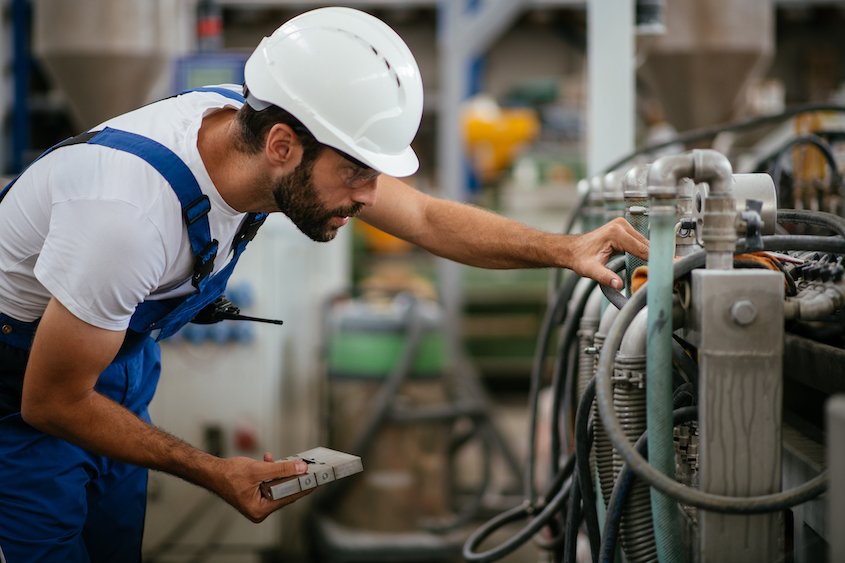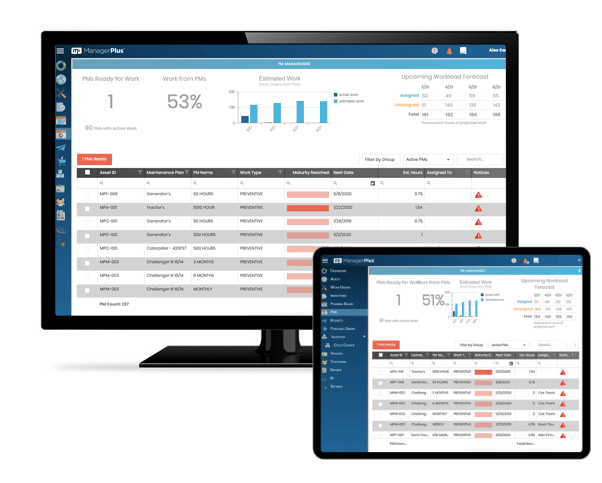Are you getting as much from your preventive maintenance program as you could be?
If not, it might be because you’re doing it wrong.
Preventive maintenance is one of the best ways to avoid failures, improve productivity, and extend life cycles, but it’s not always the best solution.
What is preventive maintenance?
Preventive maintenance is a maintenance strategy focused on improving asset uptime by proactively making repairs before critical failures occur. As the name suggests, the goal is to prevent failures by performing regular maintenance and upkeep on your assets using a schedule of inspections and tasks.
What’s the difference between reactive and preventive maintenance?
While there are other maintenance strategies, the two main ones are reactive and preventive maintenance. If preventive maintenance is about scheduling regular inspections and tasks to prevent failures, reactive maintenance is about performing repairs after an asset has already failed.
Reactive maintenance
With reactive maintenance, which a lot of people also call run-to-failure, you simply use an asset until it fails before you replace it. Many maintenance operations rely on this strategy for every asset because they believe it’s the most cost-effective solution. They would rather save the additional labor costs necessary to make repairs while the asset is still working as expected.
This means that 100% of your equipment downtime is unscheduled because you don’t know when the asset will fail. You just let it operate until it stops. But the truth is that a recent study from the Aberdeen research group found that unscheduled downtime can cost an average of $260,000 per hour. That is likely not a cost most companies can easily absorb.
A good example is your car. You know that if you don’t ever change the oil, the engine will eventually seize, forcing you to spend thousands of dollars to replace the entire engine. This is not the most cost-effective way to operate your car.
That being said, there are some assets where reactive maintenance is, in fact, the most cost-effective solution. The classic example here is a light bulb. Trying to perform routine maintenance to fix a light bulb to keep it from burning out is almost impossible, let alone unwisely expensive, but they are cheap to obtain and store and very simple to replace when they burn out. By far the most cost-effective maintenance strategy for light bulbs is reactive.
Preventive maintenance
As we mentioned, preventive maintenance is taking proactive steps to repair your assets before they break. This is done using connected technology to monitor and gather data on your assets to anticipate when failures might occur and recommend repairs before that happens.
There are two types of preventive maintenance: condition based and time based.
Condition-based maintenance is when routine maintenance tasks are scheduled for an asset based on its condition. This applies to characteristics of the asset that you can monitor such as temperature or vibration.
Time-based maintenance is when routine tasks are performed based on the passage of time. The condition of the asset does not matter as much as the amount of time that has passed since the last maintenance task was performed.

What are some examples of preventive maintenance?
Now that we know what preventive maintenance is, let’s look at a few examples of where preventive maintenance is an effective solution.
1. Vehicles – condition based
Going back to this example from earlier, simply running your vehicle indefinitely without ever changing the oil eventually leads to a catastrophic engine failure. However, the manufacturer and industry best practices developed from millions of hours driving and repairing cars, both tell you that something as simple and inexpensive as changing the oil every few thousand miles can prevent the engine from seizing.
For this example, let’s say the recommended mileage for an oil change is 5,000 miles. Here, you would use asset management software to track the mileage of your vehicle and when it reached a certain number of miles driven, such as 4,900, you could automatically generate and assign a work order to a technician to replace the oil.
2. Seasonal inspections – time based
As the name implies, these preventive maintenance tasks might be asset inspections performed before the weather changes to prevent larger maintenance issues. This could be anything from inspecting the roof of your facility before the first heavy snows of the year to ensure there are no critical repairs needed to inspecting the HVAC unit of your facility before the hot summer months.
The goal of these inspections is to ensure the safety and uninterrupted performance of your assets based on the time of year.
3. Critical, complex assets – both
Most organizations have at least a few assets that are considered highly critical—if they were to fail, it would significantly impact the safety of the employees, or the production output, or both. This is a good example of a place where preventive maintenance is most effective.
You might also want to employ both types of preventive maintenance to ensure the asset does not fail. For example, the manufacturer recommends that certain bearings be replaced after 10,000 hours of operation while some of the fluids used could be negatively affected by weather events. You could set preventive maintenance work orders to replace the bearing after every 9,900 hours of usage and schedule regular inspections for the fluids, or even just general safety inspections, every two weeks to make sure the asset is functioning properly.
This may seem a bit extreme or excessive, and in many cases, you would be right, but if an asset is critical to your organization, the costs of preventive maintenance are worth it.
How do I know if an asset is critical?
The best way to answer that is to ask yourself three questions about the asset:
- How bad is the worst-case scenario of a complete failure both in terms of employee safety and production output?
- How likely is the asset to experience an unexpected failure?
- How much would a it cost to repair or replace the asset after a failure?
The answers to these questions can help you determine how critical an asset is and whether or not you should develop a preventive maintenance plan for it.

How do I get started with preventive maintenance?
Developing a preventive maintenance program for your assets does take some work, but the right tools can make all the difference. Preventive maintenance software is designed to help you easily develop and implement a robust PM program for your assets that need it. With it, you can track all the necessary data on your assets and automatically generate and assign PM work orders when it’s time.
And because the software lives in the cloud, you can get updates to the work orders in real-time so always have the most updated information on what’s happening with your assets. All the work orders are stored in the system forever so you can go back and see what other technicians have done to keep your assets working.
You can also create custom work order templates that include user manuals from the manufacturer and notes from your senior techs, so you don’t lose their valuable knowledge when they leave your organization.
With these tools, you can develop, implement, and operate a robust preventive maintenance strategy that will keep your assets online and improve your ROI.
Next steps
Getting preventive maintenance software at your organization is easier than you might think. The best place to start is by talking with the experts. You can schedule a personalized, one-on-one call with our experts who can listen to the maintenance challenges your organization is facing and help you find the best solution to fit your needs. Schedule yours today at a time that fits your schedule.
Executive summary
Preventive maintenance is a proactive maintenance strategy that helps you anticipate equipment failures and make necessary repairs before small issues become larger problems. This is accomplished by gathering and tracking large amounts of data on your assets and automatically generating work orders when maintenance on your assets is required.
Some examples of preventive maintenance include:
- Vehicles
- Seasonal inspections
- Highly critical assets
Developing and implementing a strong preventive maintenance program is easy with the right preventive maintenance software.


